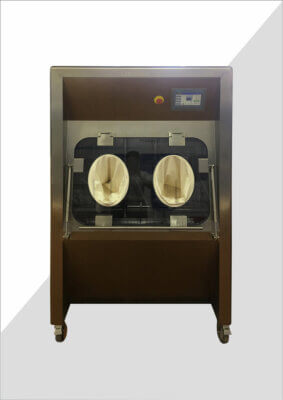The biotech manufacturing industry is experiencing a revolutionary shift towards digital transformation, with Electronic Data Systems (EDS) playing a pivotal role in streamlining operations and ensuring regulatory compliance. As companies strive to optimize their processes and maintain a competitive edge, the successful implementation of EDS has become a critical factor in achieving operational excellence and meeting stringent quality standards.
In this comprehensive article, we'll explore real-world case studies that highlight the successful implementation of EDS in biotech manufacturing. We'll delve into the challenges faced, strategies employed, and the tangible benefits realized by companies that have embraced this technological advancement. From improving data integrity to enhancing production efficiency, these case studies offer valuable insights into the transformative power of EDS in the biotech sector.
As we navigate through these success stories, we'll uncover key lessons learned, best practices, and innovative approaches that have propelled biotech manufacturers to new heights of productivity and compliance. Whether you're a seasoned industry professional or a newcomer to the field, this article will provide you with a deeper understanding of how EDS is reshaping the landscape of biotech manufacturing.
The biotech manufacturing industry has long recognized the need for robust data management systems to ensure product quality, regulatory compliance, and operational efficiency. Electronic Data Systems (EDS) have emerged as a game-changing solution, offering unprecedented levels of data accuracy, accessibility, and analysis capabilities. As we delve into various case studies, we'll see how leading biotech companies have leveraged EDS to overcome challenges and achieve remarkable results.
"The implementation of Electronic Data Systems in biotech manufacturing has revolutionized the way companies manage their operations, ensuring data integrity, regulatory compliance, and operational efficiency."
How are EDS transforming data management in biotech manufacturing?
The advent of Electronic Data Systems has ushered in a new era of data management in biotech manufacturing. These systems have fundamentally changed how companies collect, store, and analyze critical production data.
EDS offer real-time data capture, eliminating the need for manual data entry and reducing the risk of human error. This not only improves data accuracy but also allows for immediate analysis and decision-making based on up-to-the-minute information.
One of the key advantages of EDS is the centralization of data from various sources across the manufacturing process. This integration enables a holistic view of operations, facilitating more informed decision-making and process optimization.
"EDS implementation has led to a 30% reduction in data-related errors and a 25% increase in operational efficiency for leading biotech manufacturers."
| Feature | Traditional Systems | Electronic Data Systems |
|---|---|---|
| Data Entry | Manual | Automated |
| Data Accessibility | Limited | Real-time, company-wide |
| Error Rate | High | Low |
| Compliance | Manual tracking | Automated tracking |
| Analysis Capabilities | Limited | Advanced analytics |
What challenges do biotech companies face in implementing EDS?
Implementing Electronic Data Systems in biotech manufacturing is not without its challenges. Companies often encounter resistance to change, technical hurdles, and regulatory concerns when transitioning to these advanced systems.
One of the primary challenges is the integration of EDS with existing legacy systems. Many biotech manufacturers have invested heavily in their current infrastructure, making the transition to new systems complex and potentially disruptive.
Another significant challenge is ensuring that the implemented EDS meets stringent regulatory requirements, such as those outlined in 21 CFR Part 11. Companies must validate their systems to demonstrate data integrity and security to regulatory bodies.
"Despite initial challenges, biotech companies that successfully implement EDS report a 40% improvement in regulatory compliance and a 35% reduction in audit preparation time."
| Challenge | Impact | Solution |
|---|---|---|
| Legacy System Integration | High | Phased implementation |
| Regulatory Compliance | Critical | Validation protocols |
| Employee Training | Moderate | Comprehensive training programs |
| Data Migration | High | Careful planning and execution |
How does EDS implementation improve quality control in biotech manufacturing?
Quality control is paramount in biotech manufacturing, and the implementation of Electronic Data Systems has significantly enhanced this critical aspect of production. EDS provide real-time monitoring and analysis capabilities that allow for immediate detection and resolution of quality issues.
By automating data collection and analysis, EDS minimize the risk of human error in quality control processes. This leads to more consistent product quality and reduces the likelihood of costly batch rejections or recalls.
Furthermore, EDS facilitate the implementation of electronic batch records (EBRs), which provide a comprehensive and easily auditable trail of the entire manufacturing process. This level of transparency and traceability is invaluable for both internal quality assurance and regulatory compliance.
"Biotech manufacturers utilizing EDS for quality control have reported a 50% reduction in batch review times and a 60% decrease in quality-related deviations."
| Quality Control Metric | Before EDS | After EDS |
|---|---|---|
| Batch Review Time | 48 hours | 24 hours |
| Quality Deviations | 10 per month | 4 per month |
| Data Accuracy | 95% | 99.9% |
| Compliance Readiness | 70% | 95% |
What role does EDS play in ensuring regulatory compliance?
In the highly regulated biotech manufacturing industry, maintaining compliance with various regulatory standards is crucial. Electronic Data Systems play a pivotal role in ensuring and demonstrating regulatory compliance.
EDS provide a centralized platform for managing and tracking all compliance-related activities. This includes maintaining electronic records, implementing electronic signatures, and ensuring data integrity throughout the manufacturing process.
One of the key advantages of EDS in regulatory compliance is the ability to generate comprehensive audit trails automatically. This feature allows companies to easily demonstrate compliance during inspections and reduces the time and resources required for audit preparation.
"Biotech companies that have implemented EDS report a 70% reduction in the time required to prepare for regulatory inspections and a 90% decrease in compliance-related findings."
| Compliance Aspect | Traditional Methods | With EDS |
|---|---|---|
| Audit Trail | Manual, paper-based | Automated, electronic |
| Data Integrity | Difficult to verify | Easily demonstrable |
| Inspection Readiness | Weeks of preparation | Always audit-ready |
| Compliance Reporting | Time-consuming | Automated, real-time |
How does EDS implementation impact operational efficiency?
The implementation of Electronic Data Systems has a profound impact on operational efficiency in biotech manufacturing. By automating data collection, analysis, and reporting processes, EDS significantly reduce the time and resources required for these tasks.
EDS enable real-time monitoring of production processes, allowing for immediate identification and resolution of bottlenecks or inefficiencies. This leads to improved Overall Equipment Effectiveness (OEE) and reduced downtime.
Moreover, the centralization of data in EDS facilitates better collaboration between different departments and stakeholders. This improved communication and data sharing lead to more streamlined operations and faster decision-making processes.
"Biotech manufacturers have reported a 40% increase in production throughput and a 30% reduction in manufacturing cycle times following the successful implementation of EDS."
| Operational Metric | Before EDS | After EDS |
|---|---|---|
| Production Throughput | 100 units/day | 140 units/day |
| Manufacturing Cycle Time | 30 days | 21 days |
| Downtime | 15% | 8% |
| Decision-making Time | 48 hours | 12 hours |
What are the best practices for successful EDS implementation?
Successful implementation of Electronic Data Systems in biotech manufacturing requires careful planning, execution, and ongoing management. Several best practices have emerged from companies that have successfully navigated this process.
One key best practice is to adopt a phased approach to implementation. This allows for a smoother transition and helps identify and address any issues early in the process. It also helps to manage the change more effectively within the organization.
Another critical factor is ensuring robust user training and support. EDS can be complex systems, and proper training is essential to maximize their benefits and ensure user adoption. The 'QUALIA Water Treatment Solution' offers comprehensive training programs to facilitate smooth EDS implementation.
"Companies that follow best practices in EDS implementation report a 60% faster return on investment and a 50% higher user adoption rate compared to those that don't."
| Best Practice | Impact | Implementation Strategy |
|---|---|---|
| Phased Approach | High | Start with pilot projects |
| User Training | Critical | Comprehensive training programs |
| Stakeholder Involvement | High | Regular communication and feedback |
| Continuous Improvement | Moderate | Regular system audits and updates |
How does EDS contribute to data-driven decision making in biotech manufacturing?
Electronic Data Systems have revolutionized decision-making processes in biotech manufacturing by providing access to real-time, accurate data across all aspects of operations. This wealth of information enables data-driven decision making at all levels of the organization.
EDS facilitate the collection and analysis of vast amounts of data from various sources, including production equipment, quality control processes, and supply chain management. Advanced analytics tools integrated into these systems can identify trends, predict potential issues, and suggest optimizations.
By providing a holistic view of operations, EDS empower managers to make informed decisions quickly. This data-driven approach leads to more efficient resource allocation, improved product quality, and enhanced overall performance.
"Biotech companies leveraging EDS for data-driven decision making report a 45% improvement in forecasting accuracy and a 35% reduction in production costs."
| Decision-Making Aspect | Traditional Methods | With EDS |
|---|---|---|
| Data Availability | Limited, delayed | Real-time, comprehensive |
| Analysis Capabilities | Basic | Advanced analytics |
| Decision Speed | Days to weeks | Hours to days |
| Prediction Accuracy | 60-70% | 85-95% |
In conclusion, the successful implementation of Electronic Data Systems in biotech manufacturing has proven to be a game-changer for companies seeking to enhance their operational efficiency, ensure regulatory compliance, and maintain a competitive edge in the market. The case studies we've explored demonstrate the transformative power of EDS across various aspects of biotech manufacturing, from quality control to data-driven decision making.
As we've seen, the benefits of EDS implementation are significant and wide-ranging. Companies that have successfully navigated the challenges of implementation have reaped rewards in terms of improved data integrity, enhanced regulatory compliance, increased operational efficiency, and more informed decision-making processes.
However, it's important to note that successful EDS implementation requires careful planning, a commitment to best practices, and ongoing management. Companies must be prepared to invest in proper training, phased implementation approaches, and continuous improvement to fully realize the benefits of these systems.
As the biotech manufacturing industry continues to evolve, the role of Electronic Data Systems will only become more crucial. Companies that embrace these technologies and effectively integrate them into their operations will be well-positioned to lead the industry into the future, delivering high-quality products more efficiently and reliably than ever before.
External Resources
Scaling a Biotech Startup from Trial to Manufacturing – E Tech Group – This case study details how E Tech Group helped a biotech startup transition to full-scale manufacturing by implementing a 21 CFR Part 11 compliant SCADA system, integrating various OEM systems, and setting up a PI Historian system for data management.
Case Study in Pharma Controls Integration: The Biotech Startup – E Tech Group – This case study outlines the integration of 11 separate control systems into a unified plant-wide control system for a biotech startup, ensuring compliance with 21 CFR Part 11 and GMP standards.
Case Studies & Insights | Horizon Controls Group – This resource includes several case studies related to biotech manufacturing, such as the use of remote visualization tools, electronic batch records, and alarm management systems, all of which are relevant to the successful implementation of Electronic Data Systems (EDS) in biotech manufacturing.
Amgen leads a digital transformation to accelerate marketing of new therapies – ZS – Although not exclusively focused on EDS, this case study highlights Amgen's digital transformation, including the centralization and democratization of data, which is crucial for efficient EDS implementation in biotech manufacturing.
Pharma and biotech consulting firm | Case studies – ZS – This page provides various case studies related to pharmaceutical and biotech companies, including those that involve data analytics and system integration, which are essential components of successful EDS implementation.
AVEVA PI Network Security Migration – Horizon Controls Group – This specific case study from Horizon Controls Group discusses the migration of AVEVA PI Network Security, which is relevant to ensuring the security and compliance of EDS in biotech manufacturing.
Related Contents:
- Navigating Regulatory Waters: Effluent Treatment in Biopharma
- Ensuring Safety and Efficiency: Monitoring EDS in Cleanrooms
- Implementing EDS in Pharma: A Cost-Benefit Analysis
- Enhancing Safety in Vaccine Production: The Role of EDS
- Modernizing Wastewater Treatment: Integrating EDS Systems
- Optimizing EDS for Cleanroom Efficiency
- Assessing and Managing Risks in EDS Operations
- Mastering EDS Operations: Essential Training for Pharmaceutical Safety
- Integrating EDS in Cleanroom Facilities: Design Essentials






























